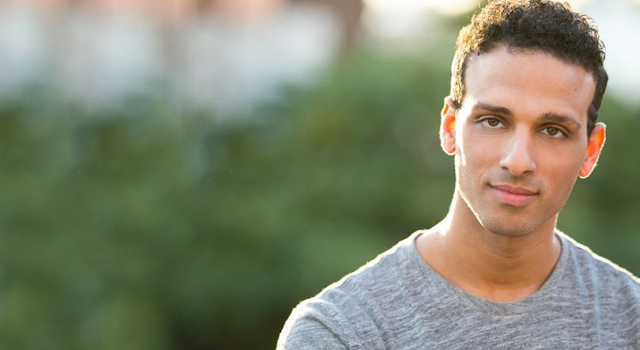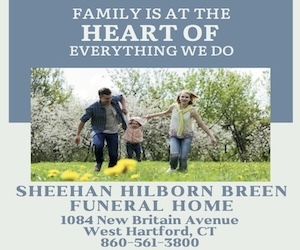By Cindy Mindell
 As if pulpit rabbis didn’t have enough on their congregational plates, many are also published authors. This year, two Connecticut rabbis contributed to new books, bringing years of personal and professional experience to their respective topics.
As if pulpit rabbis didn’t have enough on their congregational plates, many are also published authors. This year, two Connecticut rabbis contributed to new books, bringing years of personal and professional experience to their respective topics.
Rabbi Carl Astor of Congregation Beth El in New London wrote a chapter on the Jewish lifecycle in “The Observant Life: The Wisdom of Conservative Judaism for Contemporary Jews,” edited by Rabbi Martin S. Cohen and Rabbi Michael Katz and published in April by the Rabbinical Assembly.
The book expands the classic work of Isaac Klein’s 1979 “A Guide to Jewish Religious Practice.” Based on the premise that the norms of Jewish spirituality and observance apply to areas generally considered unrelated to religious practice, “The Observant Life” features chapters on the way halacha influences the way Jews actually live in and interact with the world.
Rabbi Andrew Sklarz of Greenwich Reform Synagogue wrote “Spiraling Down and Up the Staircase: The Descent of Dementia and the Ascent That Follows,” a chapter in “Broken Fragments: Jewish Experiences of Alzheimer’s Disease through Diagnosis, Adaptation, and Moving On,” edited by Rabbi Douglas J. Kohn and published in June by URJ Press.
The book’s title comes from a story in the Talmud that describes how Moses shattered the first set of Ten Commandments, destroying them along with the Golden Calf – yet he did not discard the tablets’ broken fragments. The Talmud teaches, “Respect the aged, because the fragments of the original tablets were preserved in the Ark with the new ones” (Babylonian Talmud, B’rachot 8b). The book’s editor and authors approach Alzheimer’s disease as a “human set of broken fragments.”
Rabbi Carl Astor was invited to contribute to the new volume on Jewish observance by friend and colleague Martin Cohen because of Astor’s previous book, “Who Makes People Different? Jewish Perspectives on the Disabled” (United Synagogue of America, Dept. of Youth Activities, 1985). Astor is also a mohel.
The goal of the book’s contributors was to create a work that was not only a reference, Astor says, but a “readable” sourcebook reflecting the many changes in Conservative Judaism over the last 30 years — like egalitarianism, medical ethics, and same-sex marriage.
 “It’s an evolving process, a balance,” Astor says of Conservative observance. ”When changes are made, they have to reflect two things: what is going on in society, and the legal foundations for the change.”
“It’s an evolving process, a balance,” Astor says of Conservative observance. ”When changes are made, they have to reflect two things: what is going on in society, and the legal foundations for the change.”
For example, there may be a change that makes sense legally but that will not be accepted by the Conservative community. Many years ago, the movement’s law committee decided that observing two days of the Jewish holidays was no longer necessary. A ruling was issued, allowing individual congregations to decide for themselves, with the expectation that within five or 10 years, all Conservative synagogues would transition to the one-day observance. But today, many of those congregations still hold to the two-day tradition.
On the other hand, Astor says, there are issues that bear a strong legal basis for making a change, but the community is not seeking change, and the movement must take that into account. To wit: homosexuality.
“The bible is against homosexuality, but it was written at a time when there was a different understanding of homosexuality,” Astor says. “The Conservative community wanted very much for us to have a more enlightened understanding and that it be reflected in the law.” So the movement changed to embrace the new perception. “From our point of view in the Conservative movement, Jewish law is evolving and always revealing itself in different ways,” Astor says. “That’s a challenge: to preserve the idea of tradition and change.”
A decade in the making and nearly 1,000 pages, the book was “a big undertaking,” Astor says. “It covers everything from birth to death, and you have to decide what you’re going to leave out; there’s no end to what you could include.” For his part, Astor wanted to address those topics not found in the many books on basic Judaism, and to include a lot of explanation for Jewish rituals. He incorporates an extensive section on naming ceremonies for girls, not common in similar books.
What might the next edition of “The Observant Life” look like?
“If I were to write another book in this area, based on my experience, I would want to address how this movement really needs to define itself for the next generation; that’s the biggest challenge we’re facing,” Astor says. He plans to do more writing next year, when he retires after 32 years serving Beth El.
Rabbi Andrew Sklarz was inspired to contribute to “Broken Fragments” after watching his mother grapple with Alzheimer’s disease at the end of her life.
A leukemia survivor, Sklarz was invited to contribute a chapter to “Life, Faith, and Cancer: Jewish Journeys through Diagnosis, Treatment, and Recovery” edited by Rabbi Douglas Kohn. At the same time, Sklarz’s mother was diagnosed with Alzheimer’s dementia and he proposed a book on the topic to Kohn.
In his chapter, “Spiraling Down and Up the Staircase: The Descent of Dementia and the Ascent That Follows,” Sklarz, who is also a clinical social worker, describes two parallel journeys through the disease – his mother’s and his own.
“In her journey going down – really, going way down, because so much of her was taken away with the diagnosis – I realized that, as she became less cognizant of things and her memory changed, there was a different beauty that came forth,” he says. “My journey was about losing the mother I had known for all these years. In my chapter, I’m saying to the caretaker or the loved ones: as dreadful as it is, there’s also beauty to be found, on both sides of the relationship, a relationship that will change.”
By the end of her life, Sklarz’s mother didn’t remember his name, but still recognized him when he walked into the room. “There are many challenges: the relationship is very different; you don’t have the substance of conversation, but different dimensions come forth,” he says. “There was still a delight in her eyes and a smile, an appreciation for the very simple things I might do,” he says. “There was a loving feeling that we both experienced. She could no longer converse about deep topics, but as long as someone is alive and conscious, they never lose the capacity to love or be loved. We were connecting at the soul level.”
Sklarz saw his mother regress, but she also shed a layer of fear and doubt, he says. He believes that when she died, at age 89, she was happy.
Sklarz takes the idea for his chapter title from a concept in the Talmud about going down in order to come up. He was also inspired by the Book of Jonah, especially when the prophet descends into the depths. “When my mother told me she was diagnosed with Alzheimer’s, it was a terrible blow for me,” he says. “But you go into the whale for a while and, depending on what you do, you can come out transformed. When you have a baby, you watch him or her like a flower whose petals unfold every day. With a dementia patient, it’s like the petals falling off. That forces you to blossom as a result.”
Comments? Email cindym@jewishledger.com.








 Southern New England Jewish Ledger
Southern New England Jewish Ledger









